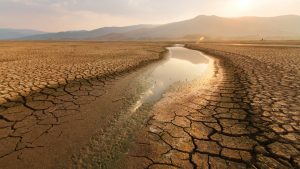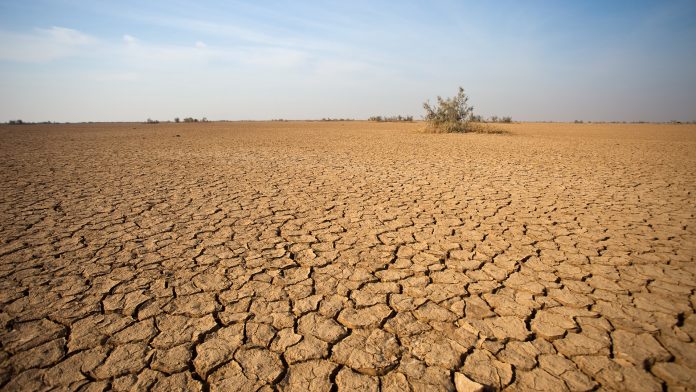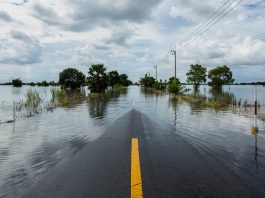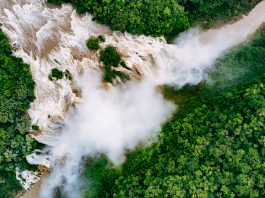Researchers from the University of Innsbruck are predicting future climate conditions to examine the effects of drought.
Extreme hydrological events such as droughts are becoming an increasing problem in many parts of the world, affecting human lives and ecosystems. The recent IPCC report stated that with ongoing climate change, extreme weather events will be more frequent, and dry periods will increase in intensity.
Michael Bahn, a researcher from the Department of Ecology at the University of Innsbruck, was involved in several studies on the effects of drought on ecosystems. These studies provide insight into the complexity of processes underlying ecosystems’ response to drought and highlight the importance of biodiversity in enabling natural systems to resist drought.
Predicting future climate conditions
“To explore how ecosystems are affected by drought, we have installed rainout shelters in grasslands and forests. The aim is to understand how an entire ecosystem with its numerous interactions reacts to drought,” Bahn explained. “By warming grassland sections with heaters and adding CO2 to their atmosphere, we can mimic the effects of drought in a future world.”
Warming increases both drought and heat stress, while elevated CO2 levels help plants save water by reducing leaf water loss. Bahn’s experiments suggest that under future climate conditions the effects of drought will be more severe, but recovery from drought will also speed up.
While warming increases both drought and heat stress, elevated CO2 helps plants save water by reducing leaf water loss. Bahn’s multifactor experiments suggest that under future climate conditions drought impacts will be more severe, but that recovery from drought will also be more rapid.
“With this experimental approach, we can predict future conditions today. It is like a time machine,” said Bahn.
Studies like these enable scientists to anticipate changes in the environment of ecosystems and how these changes affect climate. This feedback is primarily mediated through greenhouse gases such as CO2 and nitrous oxide (N2O).
“Our studies show that drought greatly reduces the uptake of CO2 by ecosystems. At the same time, the rainfall following drought often leads to an increased emission of greenhouse gases. Such ‘hot moments’ are particularly critical for N2O emissions, especially from fertilised soils,” explained Bahn.
A synthesis study published earlier this year revealed that productivity loss induced by drought can be up to 50% greater than that suggested by experiments. Because of this, models and larger-scale assessments should consider long-term field observations and larger-scale analyses of satellite data. In another recent paper, scientists suggested that as climate change progresses, the mechanisms operating in global drylands could play a developing role in areas that are currently more humid.

Resilience through biodiversity
Now, the researchers are looking into how the forecasted increases in drought frequency could affect ecosystems.
“Our recent review article in Global Change Biology highlights that drought can have strong legacies on ecosystems, which can change the way ecosystems respond to subsequent droughts,” stated Bahn.
For example, in a long-term drought experiment implemented by Bahn, it was noted that recurrent drought changed the soil microbial community composition and, surprisingly, made the soil less susceptible to drought. From this, it was concluded that recurrent drought alters the ecological memory of the soil, having the potential to increase the resilience of ecosystems in the face of increasing drought.
In another paper published in Science Advances, the researchers demonstrated that drought affects soil bacteria and fungi differently and favours soil pathogens. This shift in soil communities can change the way that biodiversity buffers the effects of drought on ecosystem productivity.
Ecosystem stability is increased by biodiversity because diverse species have different ways of coping with environmental stresses. For instance, Bahn and his colleagues noted that in mountain grasslands, fast-growing plant-species are more sensitive to drought but also recover quickly. Alternatively, slow-growing plants are more resistant but are slower to recover. In the soil, fungi are more resistant, whilst bacteria have a faster recovery rate.
“Plant-soil interactions are important mechanisms underlying ecosystem responses to drought,” explained Bahn.
Further emphasising the importance of supporting biodiversity when managing ecosystems, Bahn stated: “To strengthen the resilience of ecosystems in the face of climate change, we need to move away from favouring monocultures, such as the widespread spruce forests in Austria.”
A focus on climate neutrality
Recently, Bahn was involved in the scientific advisory board of the Austrian Climate Council. 100 citizens, selected to statistically represent the Austrian population, found potential measures to achieve climate neutrality by 2040. Bahn noted that the citizens were interested in constructively addressing the issue of climate change and adaptation.
“Politicians should not underestimate the willingness of the citizens to support measures to mitigate the climate crisis,” explained Bahn.
“While measures protecting and enhancing biodiversity are important steps towards increasing climate resilience, there is a pressing need to take rapid action to slow down climate change. This is the key driver of the recent and upcoming increases in the frequency and intensity of droughts.”









